Planning a trip to Costa Rica? Not sure what are the best spots to explore? Use our guide to the landmarks of Costa Rica to put together your Costa Rica itinerary.
Costa Rica is a relatively small country. It represents only 0.03% of the earth’s surface, yet it contains more than 5% of the world’s biodiversity. This is partly due to the diverse range of environments in Costa Rica. From the Pacific and Caribbean coastlines to the mountainous interior, Costa Rica is home to tropical rainforest, dry tropical forest, cloud forest, volcanos, beaches, mangroves, and idyllic islands. There are so many natural landmarks in Costa Rica that you can’t possibly explore them all in a single trip. That’s why many of us keep coming back to this lush corner of the world.
Did you know that Costa Rica has its own Seven Natural Wonders? That’s right, in 2007, the people of Costa Rica voted for the seven natural landmarks that would represent the beauty and diversity of the country’s landscapes. The Seven Natural Wonders of Costa Rica are: Cocos Island, Arenal Volcano, Chirripo Mountain, Celeste River, Tortuguero Canals, Poás Volcano and Monteverde Reserve.
This guide is designed to give you a choice of well-known landmarks in Costa Rica, including its Seven Natural Wonders as well as some of the country’s best hidden gems. So, whether you have already explored parts of Costa Rica or planning your first trip, you will find something here to add to your bucket list.
Costa Rica is divided into 7 provinces: San Jose, Alajuela, Guanacaste, Puntarenas, Limon, Cartago, and Heredia, and the landmarks on this list are arranged by the province so you can easily plan your itinerary around them.
READ MORE: 50 Outstanding Safari Holidays Destinations Outside of Africa
Costa Rica Landmarks in Puntarenas
Puntarenas is the largest province of Costa Rica, covering most of the country’s Pacific coast and a vast swathe of its mountainous interior. It is not surprising that Puntarenas is home to some of the most iconic landmarks in Costa Rica including Corcovado and Manuel Antonio National Parks and Monteverde Cloud Forest Reserve. But there is more to Puntarenas than its world-famous destinations.
Whale Tail and Marino Ballena National Park (Cola de Ballena)
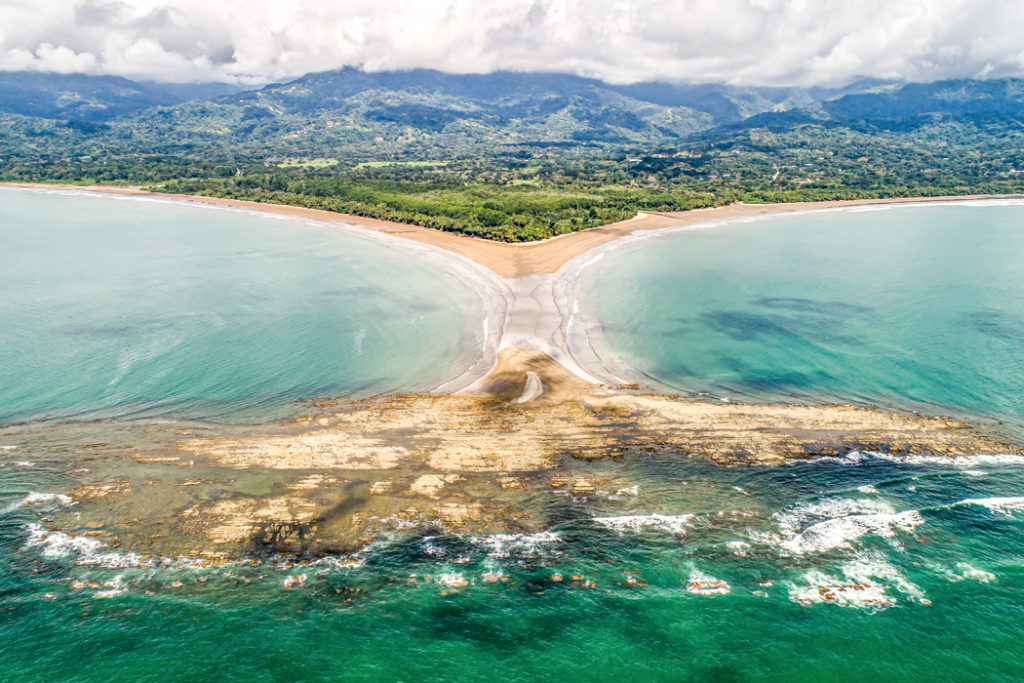
There are times when nature surprises you. Never was I more aware of this fact than when I visited Costa Rica. This small Central American country is filled with surprising, take your breath away landmarks.
However, one of the most unique landmarks in Costa Rica for your bucket list, is one of the most amazing landmarks I’ve ever seen anywhere. It’s called Whale Tail. The reason it’s so amazing is not just because the land along the coast actually looks like a whale tail but because the waters here are known for the whales that return to mate year after year.
Whale Tail is located inside Marino Ballena National Park near the small town of Uvita on Costa Rica’s southern Pacific coast. At high tide you might not notice anything special. As the water retreats at low tide, it reveals a formation made of rock and sand, in the exact shape of a whale tail.
While the tide is out, you can walk the “tail” and explore all the tidal pools left behind. As you explore, don’t forget to scan the waters of the surrounding ocean for actual whales. December through April, you’re in one of the best areas in the world to spot humpback whales. Recommended by Lori of Southerner Says
Corcovado National Park (Parque Nacional Corcovado)
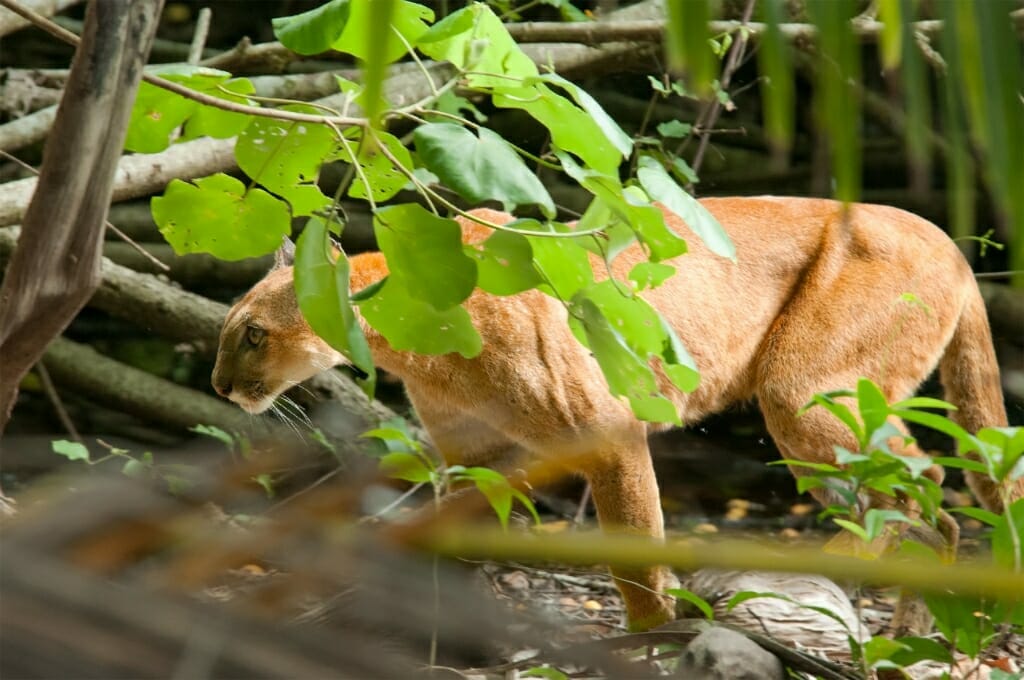
If you are looking to do some serious wildlife watching in Costa Rica, then head to Corcovado National Park. Taking up almost a third of the remote Osa Peninsula, Corcovado is the best place in Costa Rica, if not in all of Central America, for a wildlife watching adventure.
And what’s even better, because Corcovado wilderness has been protected since 1975, the animals here have no memory of being hunted by humans and display an unusual level of tolerance. As you walk the trails in Corcovado, you are likely to encounter the endangered Baird’s tapir, all four species of Costa Rica’s monkeys, tamandua, tent-making bats, and if you are very lucky, a puma.
Because Corcovado is so wild and remote it can only be visited with a certified nature guide. The best way to visit the park is for 2 or 3 days and stay at Sirena Rangers station. The dorms at Serena are spartan, but you can also camp at the station.
Getting to Corcovado is part of the adventure. The park can be reached by a 2-hour bumpy boat ride from the laid-back coastal town of Drake Bay or by a full-day hike from Puerto Jimenez. Hiking in the tropical heat and humidity is no mean feat and most people opt for the boat ride.
San Josecito Beach (Playa San Josecito)
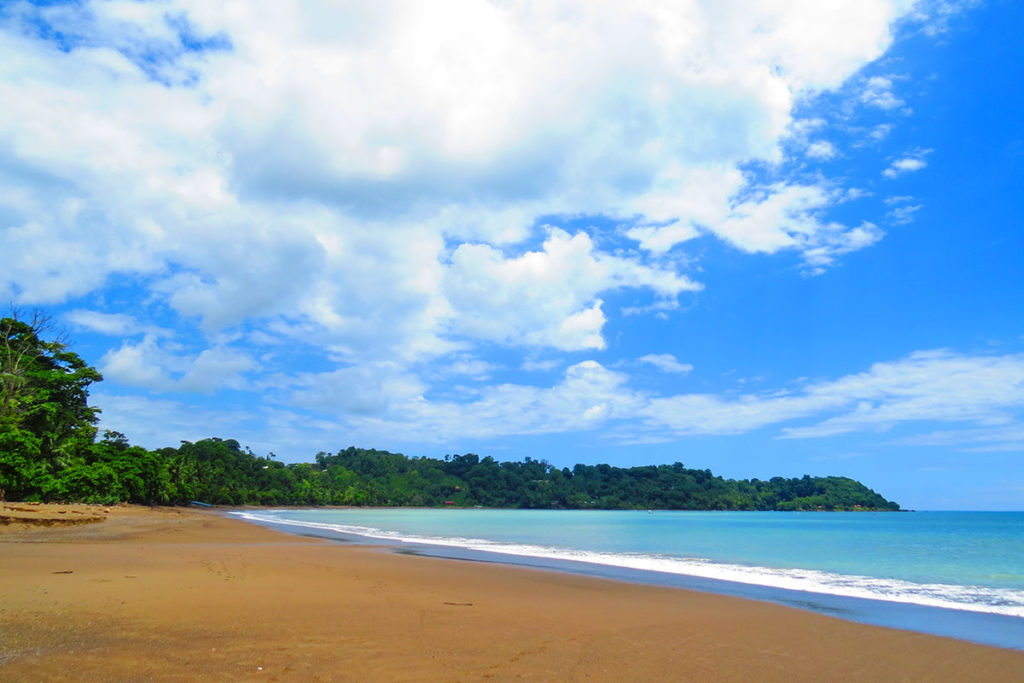
When it comes to idyllic tropical beaches, you can’t go past Playa San Josecito in Drake Bay on the remote Osa Peninsula. This lovely stretch of sand is fringed by thick rows of palm trees creating the environment where the jungle literally meets the sea. The beach is surrounded by protected areas and has a blissfully tranquil atmosphere.
Lying just 6 kilometres from the town of Drake Bay, Playa San Josecito can be reached by boat or by a spectacular hike through some of Costa Rica’s most pristine rainforest. The hike will take you past several deserted beaches and across Rio Claro which you can wade across at low tide or catch a small boat when the tide is high.
The beach is a popular stop for snorkelling/diving and whale watching boats from Drake Bay, which means you can catch a ride back to town for about $10.
Caño Island (Isla del Caño)
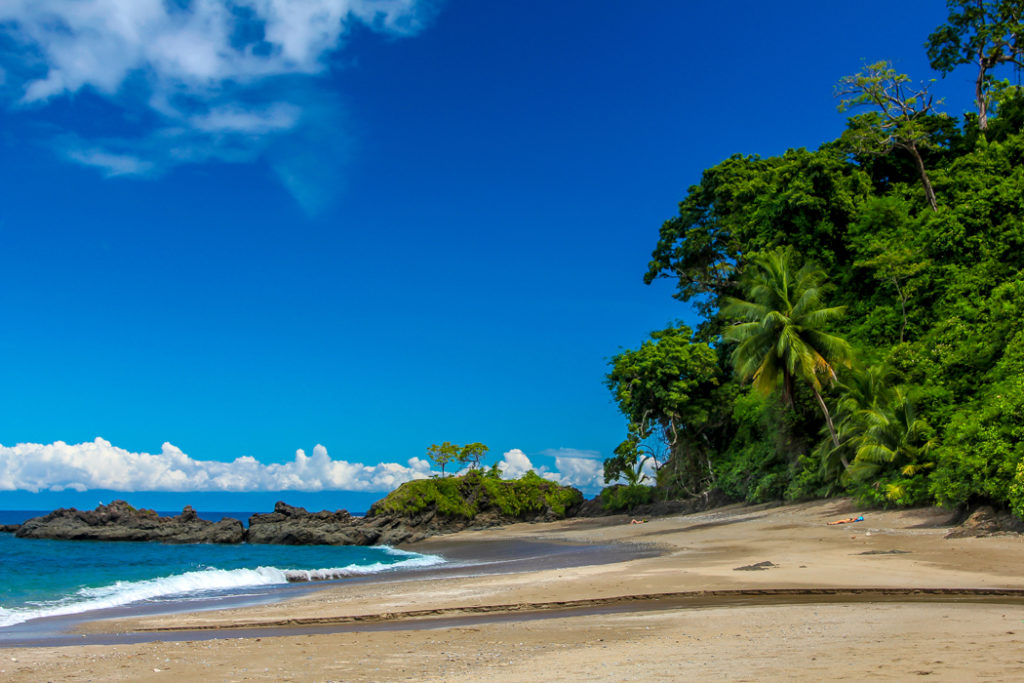
It’s not difficult to understand why tiny Caño Island doesn’t get as much international recognition as some of the other major Costa Rica landmarks. For one, it’s located in the Osa Peninsula just off the coast of Corcovado National Park, which National Geographic has described as one of the most biodiverse places on the planet. For another, its most alluring attractions aren’t even visible unless you’re a certified SCUBA diver.
The island has been on archaeologists’ radar for decades, as many of the indigenous Diquis tribe’s hard-carved stone spheres have been found nestled among the island’s evergreen forest. To this day, historians have no idea how they got here, more than 40 minutes by boat from the mainland.
But Caño Island is most famous as one of the world’s primo SCUBA spots, with five densely populated coral reef platforms surrounding it. Coral Garden is a more shallow dive, offering exceptional views of the coral reef system, while Bajo del Diablo Deep is a bit deeper and often home to various species of reef sharks.
Divers may also have a chance to see huge schools of colorful tropical fish, lobsters, Moray eels, spotted rays, seahorses, sea turtles, and other intriguing forms of marine life. And if you visit during the peak diving season– from January through June– you might even get a chance to see pods of dolphins and whales drawn to the area’s warm waters in winter.
Caño Island became a protected biological reserve in 1978, so you can’t fish or collect shells within 3 miles of the island. But the beautiful beach and incredible underwater world you explore right offshore make this a road-less-traveled gem. Recommended by Bret Love & Mary Gabbett of Blue Ridge Mountains Travel Guide
Manuel Antonio National Park (Parque Nacional Manuel Antonio)
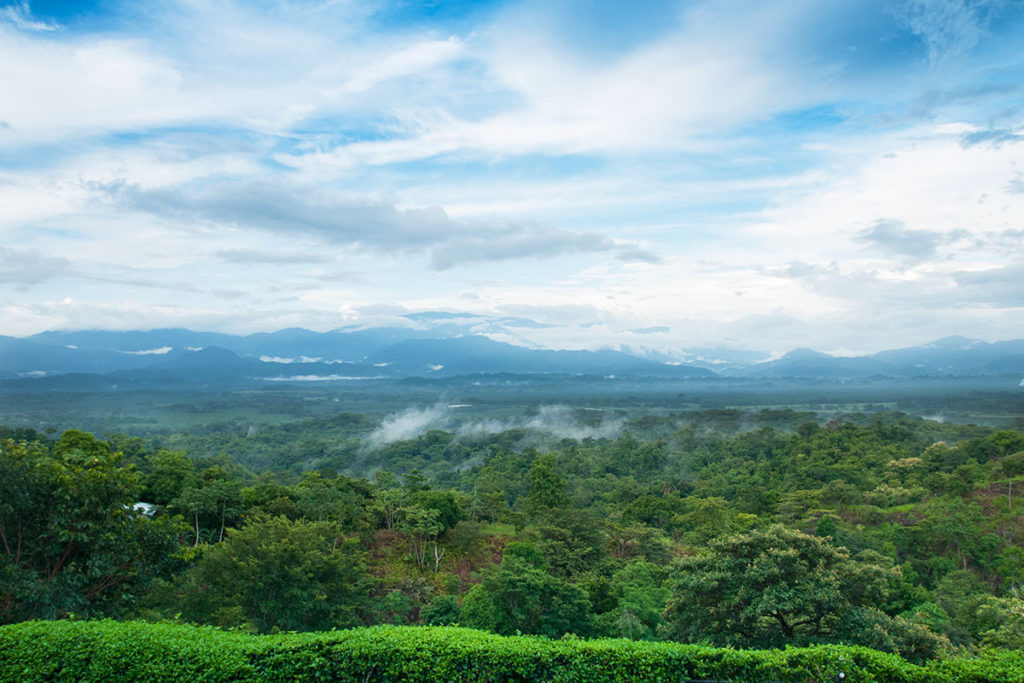
Manuel Antonio is one of the most popular national parks in Costa Rica. In 2011, Forbes voted it as one of the world’s most beautiful national parks. Such popularity comes at a price, of course – Manuel Antonio is one of the busiest national parks in Costa Rica. So to make the most of your visit to Manuel Antonio, aim to be there first thing in the morning. Is it going to be crowded? Probably yes. Are you going to see much wildlife in Manuel Antonio? A resounding, yes!
The main trail that connects the park’s entrance to Manuel Antonio beach gives you a chance to see sloths, howler and squirrel monkeys, iguanas and dozens of bird species. You can hire a nature guide with a spotting scope at the park’s entrance, or you can rely on your own wildlife spotting skills. If you are not new to wildlife watching, most of the animals are relatively easy to see.
At the beach, keep an eye out for raccoons. They are cute creatures to see in the forest, but they become a nuisance when they start rampaging through your bags looking for food. And If you feel like another hike, you can access Punta Catedral loop trail from Manuel Antonio beach.
Damas Island (Isla Damas)
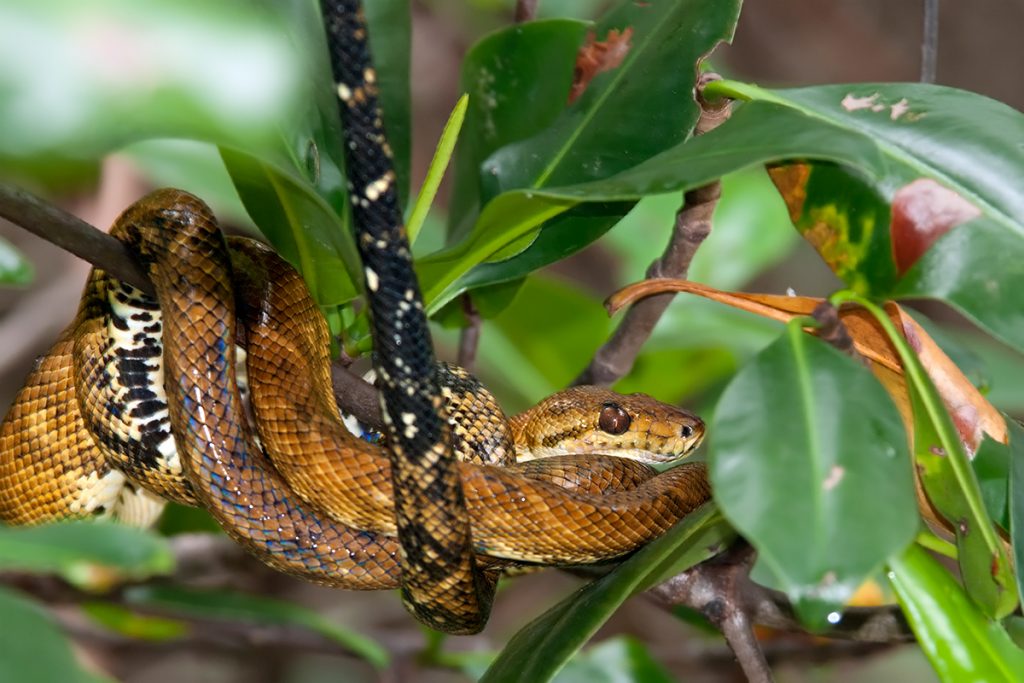
Damas Island is another off the beaten track spot where you can find some solitude in Costa Rica, but not in a way you think. Damas is not a ‘lie on the beach’ kind of island, but a mangrove swamp teaming with wildlife.
The way to explore Damas Island is to take a kayak or boat tour through its mangroves. And if you enjoy wildlife spotting, Damas Island should definitely be on your Costa Rica itinerary – it is the only place in the world where you can reliably spot a Silky anteater. The smallest anteater on earth, the Silky anteater is nocturnal and completely arboreal, so keep your eyes peeled on the mangrove canopy for a fluffy yellowish ball snuggled up between the branches.
Apart from the anteaters, Damas Island mangroves are home to Four-eyed opossum, white-faced capuchins, dozens of bird species and a few reptiles, including the magnificent Mangrove boa. The boat tours last about 4 hours including lunch and a pick up from your accommodation in Quepos or Manuel Antonio area.
Monteverde Reserve (Reserva Monteverde)
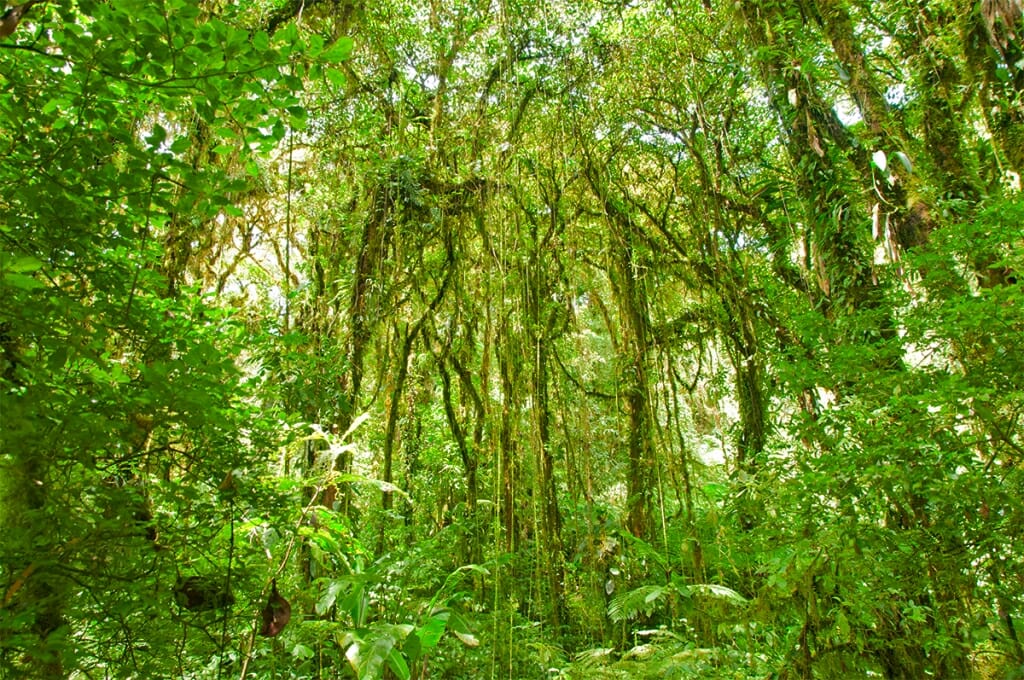
Monteverde is one of the most magical places in Costa Rica. Most of the reserve is taken up by the misty cloud forest where the trees are shrouded in mist and draped with the mossy tendrils of Old man’s beard. Cloud forest occurs only at high elevation where the environmental conditions allow for a constant cover of low-hanging. As a result, cloud forests represents just 1% of the world’s forest cover.
Monteverde is home to an astonishing abundance of plants and wildlife species – close to 2.5 per cent of the world’s biodiversity, including 100 mammal species, 400 species of birds and 161 species of amphibians and reptiles. Most of the animals are difficult to see in the thick jungle, but this doesn’t mean that you can’t see wildlife in Monteverde.
The most amazing wildlife experience in Monteverde is the Hummingbird Gallery located near the top of the cloud forest. Late in the afternoon hundreds of the tiny, brilliantly-coloured hummingbirds congregate in the small garden around the gallery, attracted by the nectar feeders. As the birds flutter between the feeders they often pass so close that you feel the gentle rush of air generated by their fast-beating wings.
Another option for discovering wildlife in Monteverde is to join a spotlighting walk. Sloths, Mexican porcupines, vipers and tarantulas are some of the most frequently spotted forest inhabitants. If you are lucky, you might see an Olinguito that was only ‘discovered’ by biologists in 2013.
Cocos Island (Isla Del Cocos)
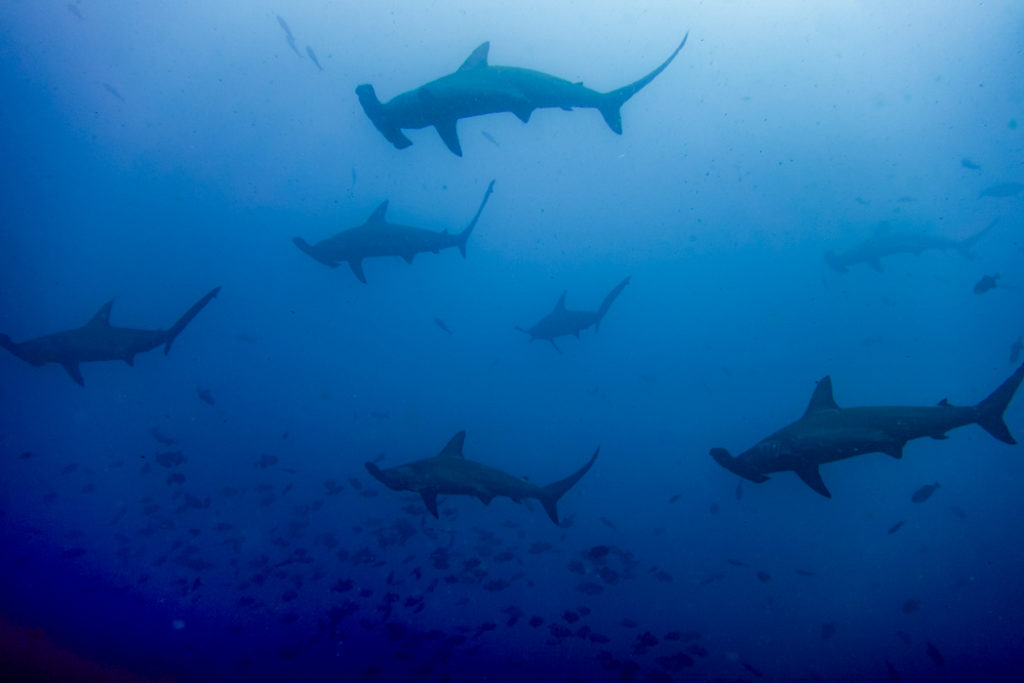
One of the Seven Natural Wonders of Costa Rica, Cocos Island lies 550 km (342 mi) southwest of the Costa Rican Pacific coastline. The entire island has been protected as a National Park since 1978 and designated a UNESCO World Heritage Site in 1997.
Shaped by ancient volcanic eruptions, the landscape of Cocos Island is made up of dramatic cliffs and deep valleys shrouded in the pristine tropical jungle. This is the real Jurassic World. In fact, the introduction scenes for ‘Isla Nublar’ in the Jurassic Park movie were filmed right here (while the rest of the film was shot in Hawaii).
Cocos island is surrounded by very deep waters which makes it a perfect habitat for numerous pelagic species such as sharks, whales and dolphins. The island’s most famous wildlife attraction however is the Hammerhead sharks that congregate here in large numbers.
With about 20 dive sites, Cocos island is a popular diving destination and the only way to visit the island is by liveaboard boats. There is no accommodation on the island and a permit is required to land on its virgin shores.
Costa Rica Landmarks in Alajuela
The second-largest province in Costa Rica, Alajuela covers most of the northern part of the country. It is home to active volcanos, tropical forests, dramatic waterfalls and an abundance of wildlife.
Arenal Volcano (Volcán Arenal)
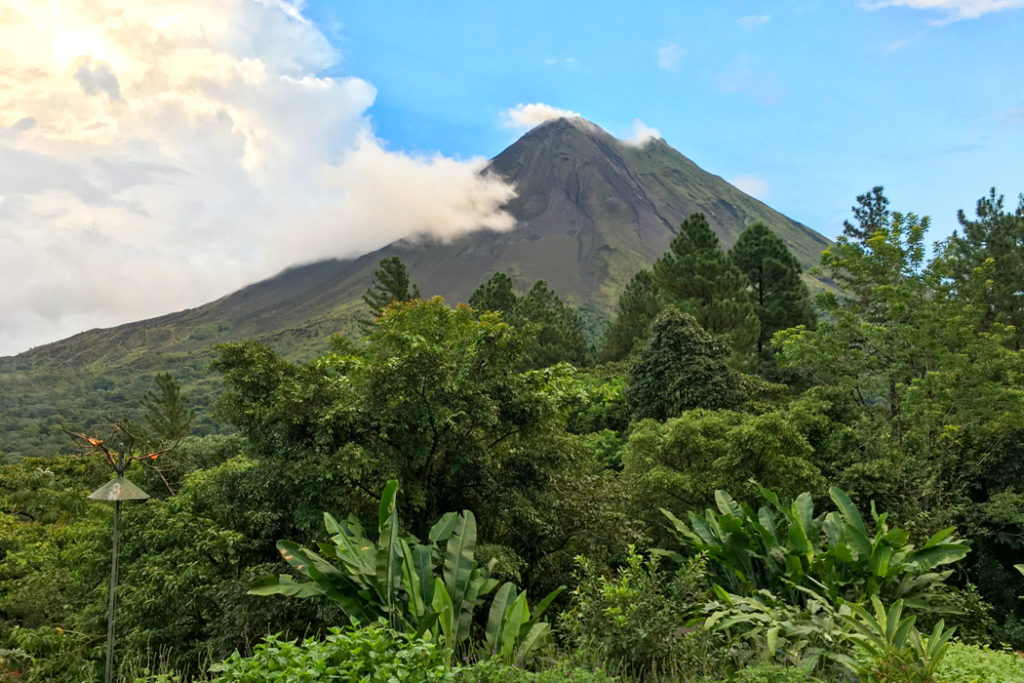
Arenal Volcano is the most active volcano in Costa Rica, which also makes it one of the most popular to visit. It’s not only exciting to see steam coming out from the top, but it is also a beautiful volcano, surrounded by green rainforests.
Arenal Volcano is in northern Costa Rica, about three hours from San Jose. The nearby town, La Fortuna, is a great place to stay for a couple days and enjoy sights of the volcano and activities around it.
While hiking is not allowed on Arenal Volcano, there are still many hikes to do around it that provide great views of the volcano, including Cerro Chato, a smaller volcano right next to Arenal Volcano. This steep hike can get really muddy after a big rainfall, but if you are in the area on a good weather day and have a half day to spend hiking, this is a great choice.
Other popular hikes in the area are La Fortuna Waterfall and Hanging Bridges—both of which provide views of the volcano and lots of opportunities to see Costa Rica wildlife.
The volcanic activity provides natural hot water all over La Fortuna, so soaking in a hot spring is another wonderful activity there. Many resorts have hot springs, but two of the most popular are Baldi Hot Springs and Ecotermales.
Dozens of tours start in La Fortuna, from ziplining to river rafting and beyond. You’ll love the adventures you find as you enjoy La Fortuna’s most famous landmark—Arenal Volcano! Recommended by McKenna Hurd of One More Step Travels.
Mistico Hanging Bridges
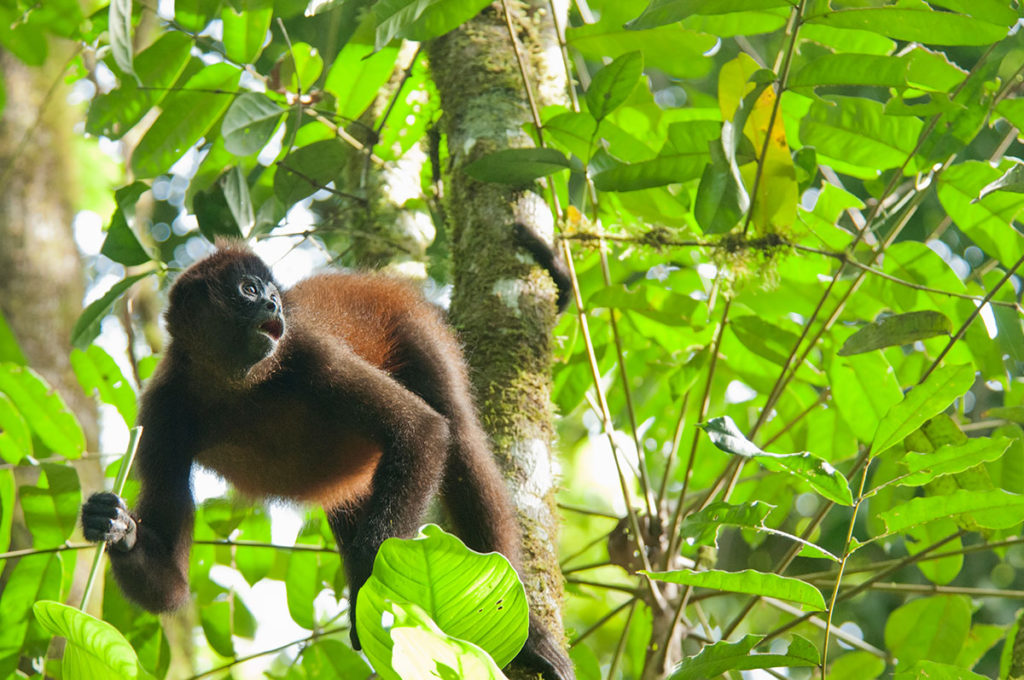
Nestled in the stunning rainforests of La Fortuna lies the beautiful Mistico Arenal Hanging Bridges Park. It is a paradise for nature lovers, birders, hikers and pretty much all sorts of tourists visiting Costa Rica.
One of the top reasons for visiting Mistico Arenal hanging bridges park is the wide diversity of flora and fauna. Stretching over 250 hectares of lush green forests, the park boasts of no less than over 700 plants, 350+ bird species, 250+ amphibians and 120+ mammals – all in one big beautiful arena.
In just one hike around the park, we spotted over 10 different species of Hummingbirds and a Spider monkey (a lifer for me), among other creatures. It was drizzling while we were in the park and it was perhaps even more stunning than ever. The hiking path was slippery but easy and the rainforest came alive in the downpour. Everything seemed fresher and greener.
I would highly recommend adding this to your Costa Rica itinerary and a good tip is to go as early as you can to avoid the tourist bus crowds which follow closer to lunchtime. Recommended by Jo of Wander with Jo.
Del Toro Waterfall (Catarata del Toro)
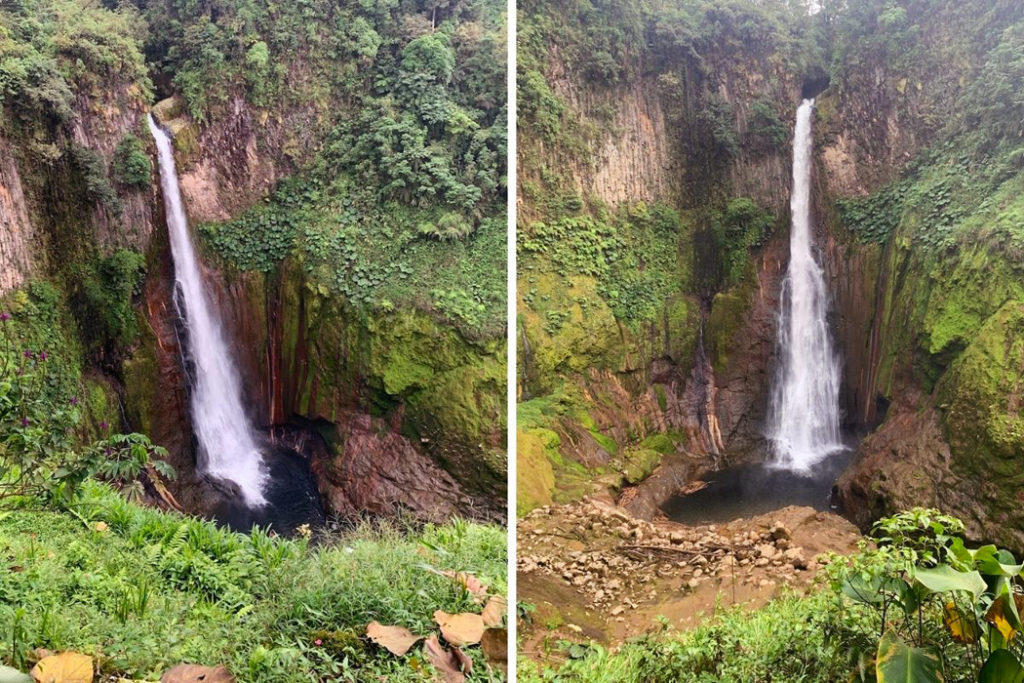
If you’re looking for the most famous and beautiful landmarks in Costa Rica, then Catarata del Toro waterfall has to feature on your bucket list.
Located inside an extinct volcano crater and surrounded by a tropical rainforest, Catarata del Toro is one of the most dramatic and scenic waterfalls you will ever see. With its 90 metre drop, it’s also one of the tallest waterfalls in Costa Rica.
Catarata del Toro is about a 2-hour drive away from San Jose. The easiest way to get there is by renting a car. You can pair your time in Catarata del Toro with a visit to the Blue Falls of Costa Rica, and then drive on to La Fortuna or Sarapiqui.
The entrance fee to Catarata del Toro is 14 USD, or for 25 USD you can get access also to the Blue Falls. You can hike all the way down to the base of the falls, and admire the power of the waterfall and the beauty of the surrounding rainforest. It’s a place of stunning natural beauty, which should feature on every Costa Rica bucket list. Recommended by Greta of Greta’s Travels
La Fortuna Waterfall (Catarata Rio Fortuna)
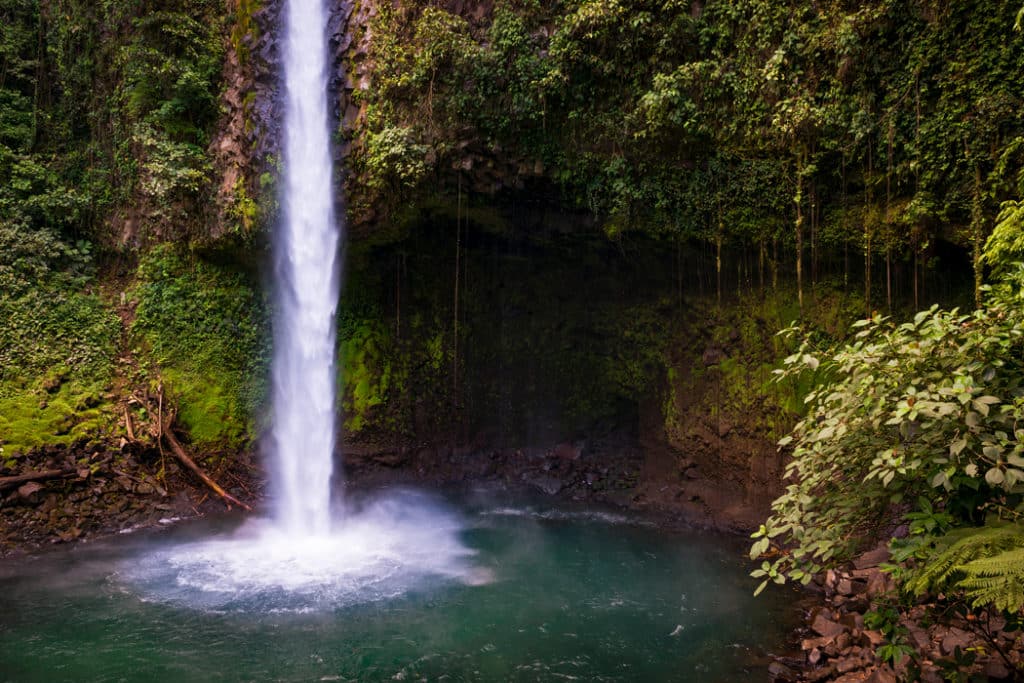
La Fortuna waterfall, aka Catarata Fortuna in Spanish, is one of the most beautiful landmarks in Costa Rica! The town of La Fortuna is located in central Costa Rica, in the Alajuela Province. You will find the waterfall only 5,5 km from the town so it’s pretty easy to access by car. It’s also not far from the famous Arenal Volcano.
The whole area is a biological reserve offering 210 acres of transition premontane tropical wet forest. Therefore, it’s quite lush all around the waterfall and very picturesque!
La Fortuna Waterfall is a stunning 70 meters high waterfall formed by the Arenal river plunging over a cliff after travelling through the rain forest in the Arenal Mountain range.
There is the viewpoint to observe it from above and take beautiful photos. And you can also swim in the Fortuna River in front of the waterfall!
You have to pay 18 USD to access the area. A staircase of around 530 steps will take you down to the waterfall. The hike will take you about 10 min on the way down and 20 min on the way up. Although it can be a bit exhausting, it’s totally doable and accessible for all (even for families with kids). Be aware that the path is only open from 7:30 am to 4:00 pm. Recommended by Ophelie of Limitless Secrets
Poas Volcano (Volcán Poás)
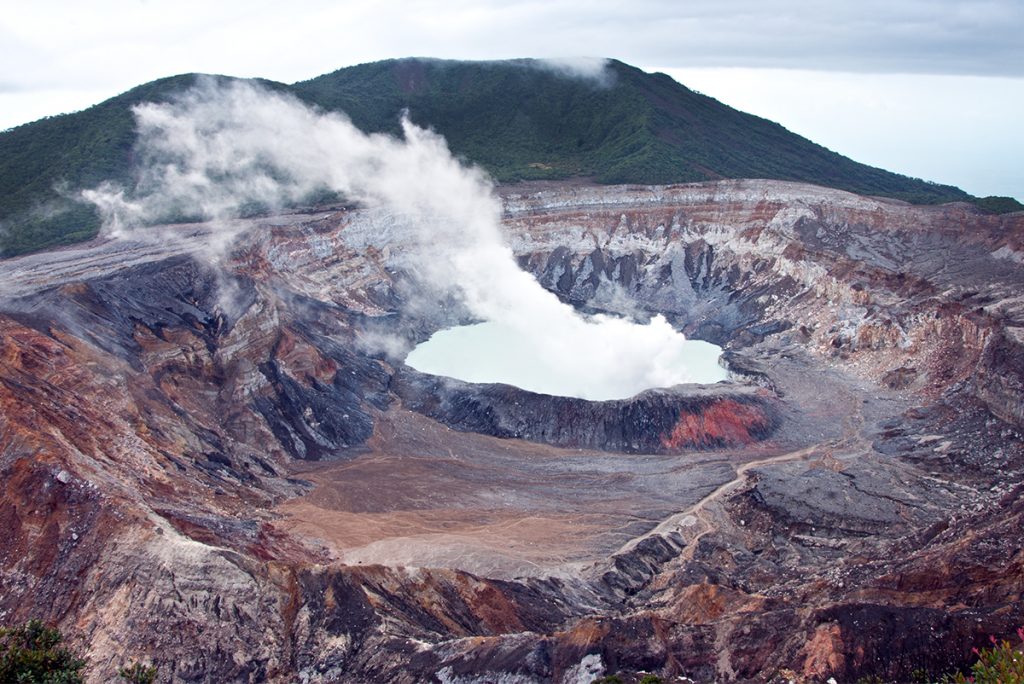
At 1.6 km across Poas Volcano is one of the largest active craters in the world. And when I say active, I mean that it spurts out stones and ash quite regularly. It has erupted at least 40 times since 1828. The most significant recent eruption happened in April 2017 as a result of which, the local residents and visitor were evacuated and Poas Volcano National Park, where the volcano is located, was closed for almost 1.5 years.
Thankfully, the park re-opened in September 2018, but the way you visit the park has changed to include new safety protocols. Under the new rules, you can only stay at the crater for 20 minutes and have to wear a hard hat.
Despite the tight safety rules, Poas Volcano is an extraordinary landmark. The very fact that it can erupt at any point fills your blood with adrenaline. A short but steep walk from the carpark takes you through the mist-shrouded dwarf cloud forest to the lookout right above the crater that’s filled with a milky-green acidic lake. The sulphurous fumes and drifting mist emanating from the lake land the scene a slightly sinister feeling, as do the contorted shapes of the stunted trees in the surrounding forest.
Whether you’ll have good visibility of the creator is pretty much luck of the draw. We arrived to the crater completely hidden in thick mist, but within minutes the mist shifted and exposed the dramatic lake. So don’t give up too quickly if the mist is thick when you arrive. The visibility changes by the minute.
Costa Rica Landmarks in Guanacaste
Located in the far northwest corner of Costa Rica, Guanacaste province is home to stunning coastline, dramatic mountain ranges, and Costa Rica’s happiest, healthiest and longest living people.
Nicoya Peninsula Blue Zone (Península de Nicoya)
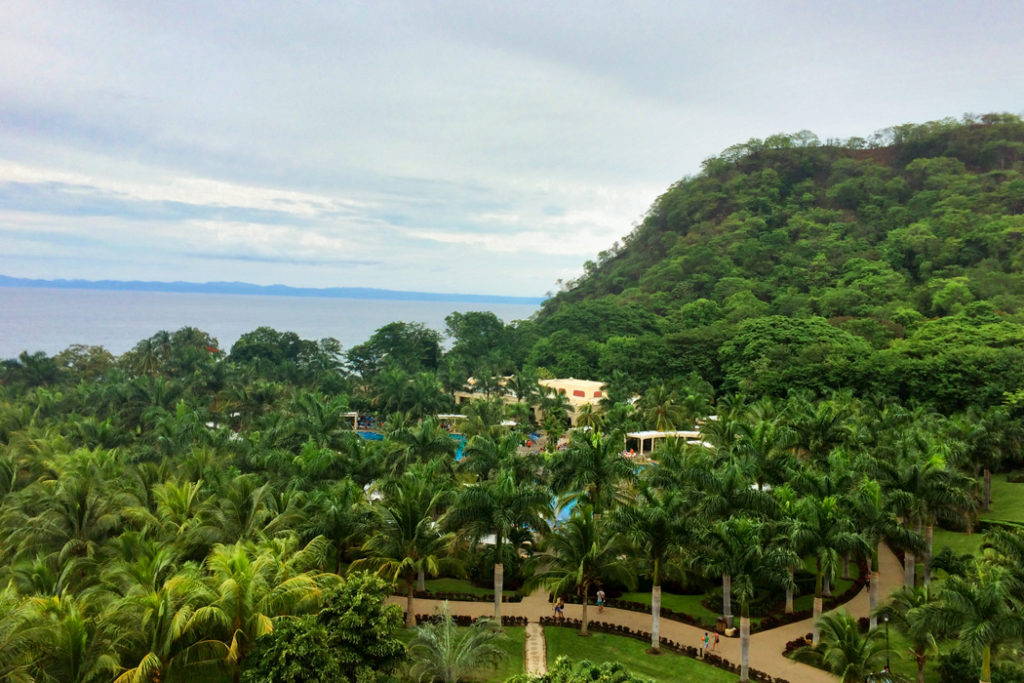
Nicoya peninsula blue zone is one of the most unusual landmarks in Costa Rica – it is one of the five regions in the world where people live longest and have the best health (along with Okinawa, Japan; Sardinia, Italy; Nicoya, Costa Rica; Ikaria, Greece, and Loma Linda, California).
According to recent research, Nicoya Peninsula residents often live more than 100 years (in contrast to 70 years global average). And most of the centenarians in the region live below the poverty line. So what is the secret to Nicoyans’ long and healthy lives? It all starts with a sense of purpose. Nicoyans refer to it as ‘plan de vida’, or ‘life plan’ – a positive reason to live characterized by simplicity and strong ties to family and community.
To enjoy the simple life on the Nicoya Peninsula, spend some time on its stunning coastline. With beaches like Santa Teresa and Tamarindo and the beautiful Las Catalinas, there are plenty of opportunities to relax and slow down on the peninsula. Moving away from the coast, Palo Verde National Park is one of the best places in Guanacaste to see some of the region’s wildlife while cruising down the Tempisque river. See more details on these destinations below.
Las Catalinas islands (Islas Santa Catalina)
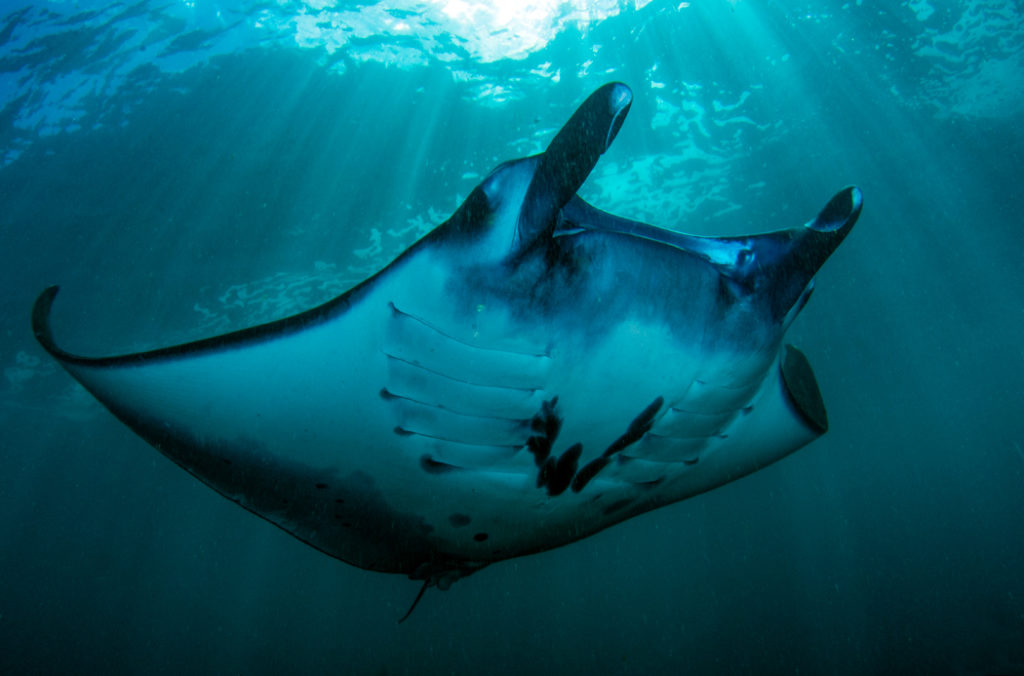
Las Catalinas Islands are a hidden gem located on the Pacific Coast of Costa Rica. These islands are a hidden gem and natural landmark that shouldn’t be missed when visiting.
It’s easy to get to the islands from the beach town of Tamarindo. The Catalina Island chain is actually an archipelago of rocky islets, ranging from 2-15 miles off the coast. While the islands don’t look like much above water, they are filled with bustling wildlife underneath the waves. There are a number of snorkeling and scuba diving tours that visit daily. The Catalina Islands are home to the Pacific Giant Mantas, so be sure to bring an underwater camera with you.
If you’re not lucky enough to see the mantas, there’s plenty of other wildlife nearby including sharks, turtles, eels, turtles, and plenty of schools of fish. When you’re on the boat, be sure to keep an eye out for devil rays which are often seen launching and flipping several feet out of the water.
The Catalina Islands are one of the most beautiful places to visit in all of Costa Rica, giving visitors a glimpse into another, untouched world. Recommended by Pam of the Directionally Challenged Traveler
Tamarindo Beach (Playa Tamarindo)
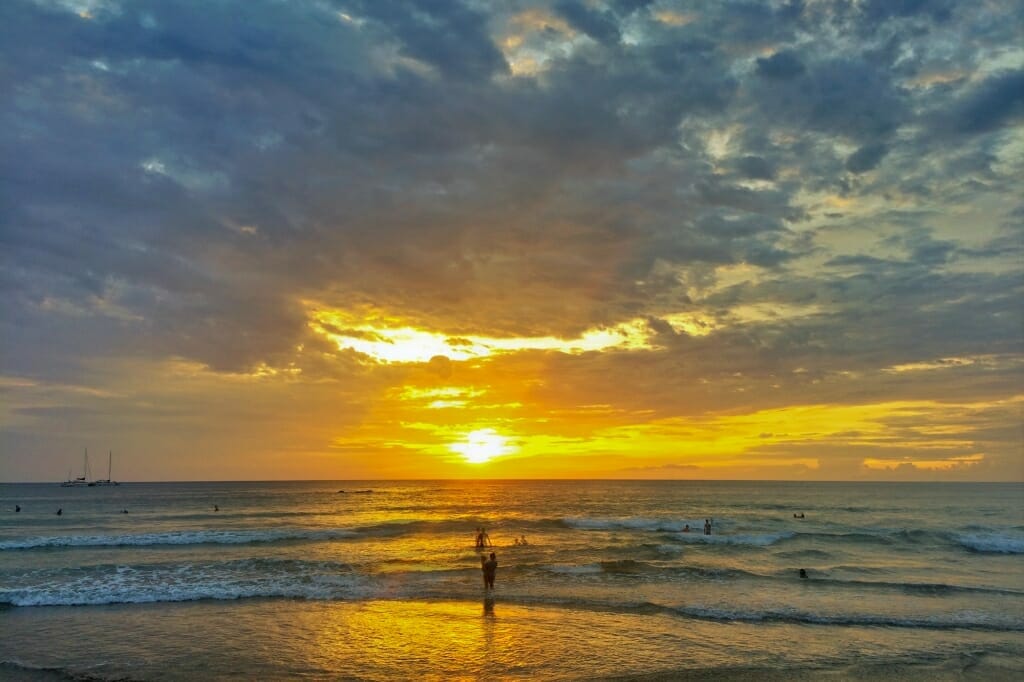
One of the most beautiful and most famous beaches in Costa Rica, Tamarindo offers three and a half kilometres of white sand and clear blue water. It lies within the Nicoya Peninsula Blue Zone which makes it the perfect place to slow down, relax, and enjoy the simple life.
The town of Tamarindo started off as a quiet fishing village and over the years developed into a popular tourist destination. It lies within a 1-hour drive from Liberia airport and serves as a convenient base for exploring Guanacaste province over a number of days. Once you’ve done all the relaxing in the sun you can handle, there plenty of more adventurous activities to choose from at Tamarindo. You can explore the underwater world on diving or snorkelling trips, ride across the countryside on horseback or zip above it on a zip-lining adventure.
For a tranquil kayaking experience, head just north of town to Tamarindo River and Playa Grande estuary. You can spend hours in these shelter waterways spotting water birds and reptiles. And if you are visiting between November and April, make sure to take a night tour at Las Baulas National Marine Park to see hundreds of leatherback sea turtles – the largest marine reptiles in the world, emerge on the beach to lay their eggs. These incredible animals travel almost 6,000 kilometres (3,700 miles) between their feeding grounds in the temperate waters and their tropical breeding sites.
Palo Verde National Park (Parque Nacional Palo Verde)
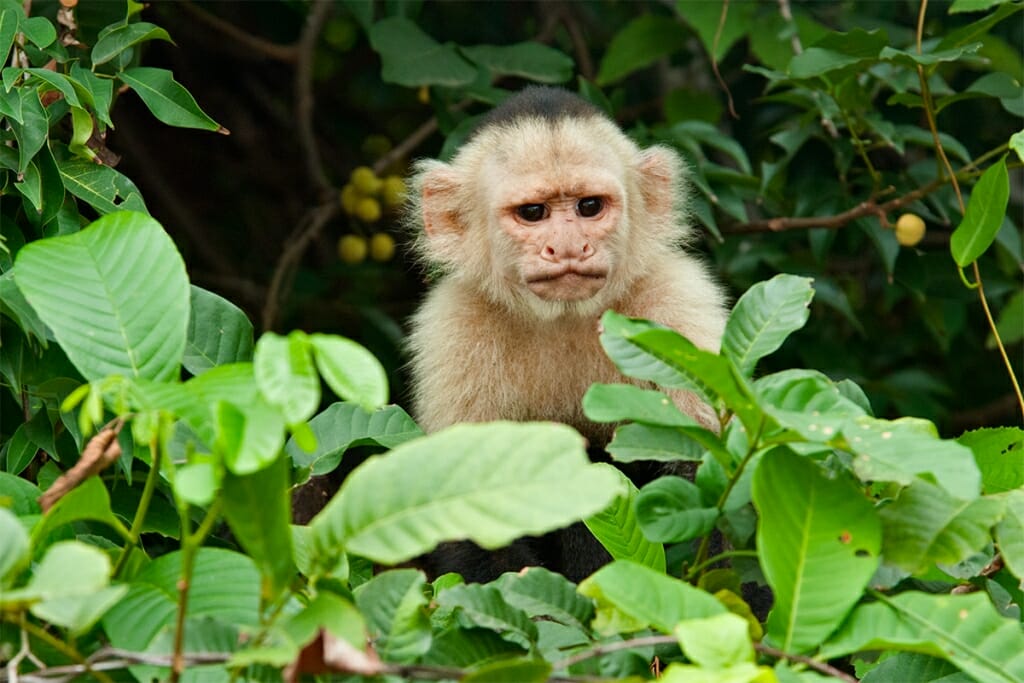
Palo Verde is a unique National Park. It is home to a vibrant wetland teaming with wildlife and to a large patch of the rare dry tropical forest. The reason for such dramatic contrast is that the Tempisque river flows through the dry forest and floods the plains.
The best way to explore the park is on a boat safari along Tempisque River. In two hours on the River you will see more wildlife than in two days of driving around the park. Dozens of water birds congregate in the shallows, birds of prey perch in the tree tops, iguanas snooze on the low branches of riverside trees and crocodiles bake on the muddy banks.
You might even get an up-close and personal encounter with the local White-faced capuchins. We had them jump onto the boat and climb on top of our heads.
The flooded fields just outside the park are home to even more water birds. Keep an eye out for the magnificent Jabiru stalks and the brilliantly-coloured kingfishers.
Ilanos de Cortez Waterfall (Cataratas Llanos de Cortes)
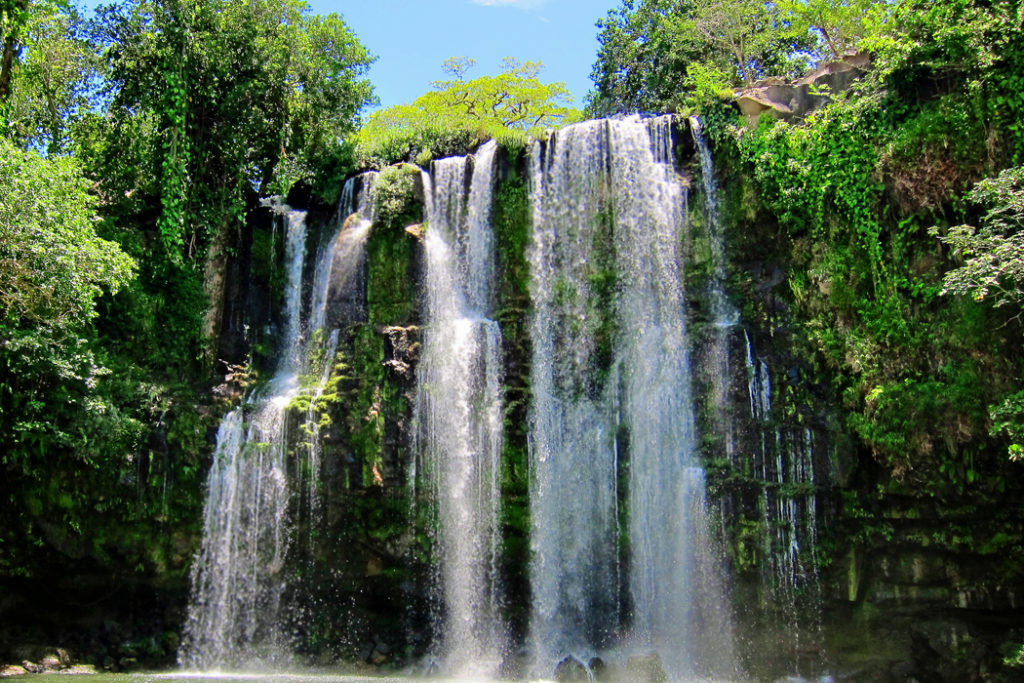
Once a hidden gem known mainly to locals, the Llanos de Cortes waterfall in Costa Rica is now a popular landmark in the Guanacaste region of the country. Just 30 minutes outside of Liberia, Costa Rica, Llanos de Cortes is the perfect swimming hole for a hot afternoon in Costa Rica’s tropical climate. The waterfall cascades 65 feet off a cliff into a shallow pool of water which then connects to a small creek. It is known as one of Costa Rica’s most beautiful waterfalls!
This Costa Rican landmark is a convenient stop if driving from the beaches in Guanacaste to the Arenal Rainforest, and costs only a few US dollars per person to visit. The water in the small pool beneath the waterfall only reaches depths of 6-8 feet and is gentle enough to swim in. You can even swim right up to the base of the waterfall and climb the rocks to and stand behind the falls.
Although located right off the highway, getting to Llanos de Cortes can be tricky, as the road that leads to the waterfall is unpaved and very bumpy. But to experience, this beautiful landmark is worth the bumpy drive to check Llanos de Cortes off your bucket list. Recommended by Melissa of Parenthood and Passports
Celeste River (Río Celeste)
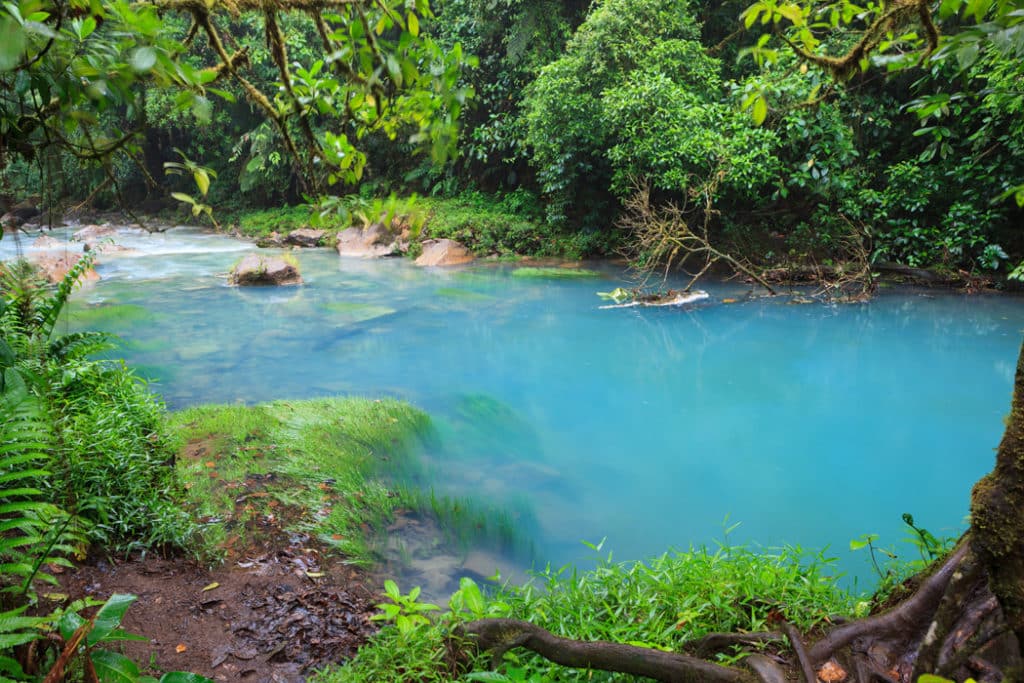
One of Costa Rica’s top natural attractions, Rio Celeste is famous for its waterfall and the river that has an intense blue colour.
Located in the Tenorio Volcano National Park in the Guanacaste province of Costa Rica, Rio Celeste is a quick drive from La Fortuna, one of the most popular places in Costa Rica. To visit Rio Celeste, you will need to rent a car.
Seeing the incredible colour of the river is a magical experience, and while this bright shade of blue comes from a combination of calcium carbonate and sulphur, there are many legends about how this colour came to be.
A hike to Rio Celeste will take you along beautiful lagoons, hot springs, and a beautiful waterfall, one of the most popular stops along the way. Since only a limited number of people are allowed to go down to the platform in front of the waterfall, you might have to wait in line before you are able to get there. That’s why you should come here earlier rather than later.
What’s great about Rio Celeste, is that anybody can hike the trail along the river. And, if you get lucky, you might even spot some wildlife in the jungle around you! However, it can get pretty muddy, so I recommend checking the weather and making sure there’ no rain ahead of your visit.
The best time to visit Rio Celeste is from late November through April, which is a dry season in Costa Rica. Recommended by Daria of The Discovery Nut
Costa Rica Landmarks in Heredia
Heredia Province covers the north-central part of the country. It contains charismatic mountainous villages, pristine rainforest, dramatic mountain ranges and spectacular waterfalls.
Tirimbina Biological Reserve (Reserva biológica Tirimbina)
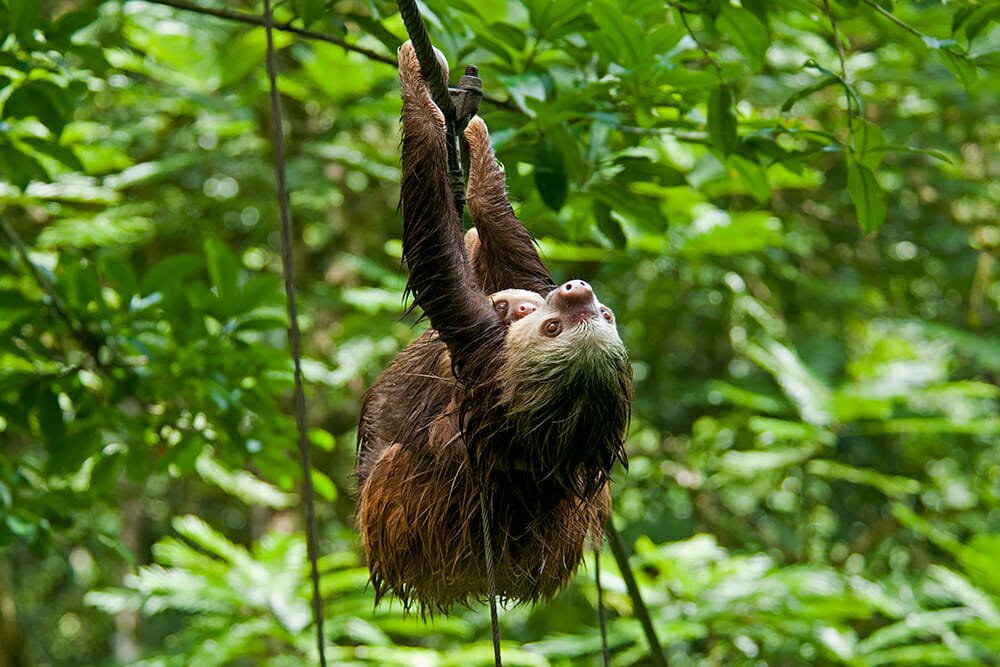
Tirimbina Biological Reserve flies mostly under the tourist radar in Costa Rica, despite being home to the longest (and slightly terrifying) suspension bridge in the country. It is also one of the best and the most affordable places to experience tropical rainforest in Costa Rica. Part a protected reserve and part a biological field station, Tirimbina is home to an abundance of wildlife species, including the adorable Honduran white bats. And of course, the two suspension bridges in the reserve are a perfect platform for spotting canopy-dwelling species.
The long bridge stretches for 262 meters over Sarapiqui River and you can walk over it at night on a spotlighting walk and during the day on your own explorations of the reserve. Ironically, I found it less intimidating at night, mostly because we couldn’t see just how high it was.
The other suspension bridge at Tirimbina – the canopy bridge, is even higher, but because it’s shorter, it doesn’t wobble quite as much when you walk over it. Visit this bridge early in the morning and you’ll see more birds than you’ll be able to count, not to mention sloths that occasionally cross this bridge while you stand on it.
The walking trails at Tirimbina are great for spotting a variety of poison dart frogs. They are much smaller than most people realize, so you’ll have to locate them by listening to their calls.
San José de la Montaña
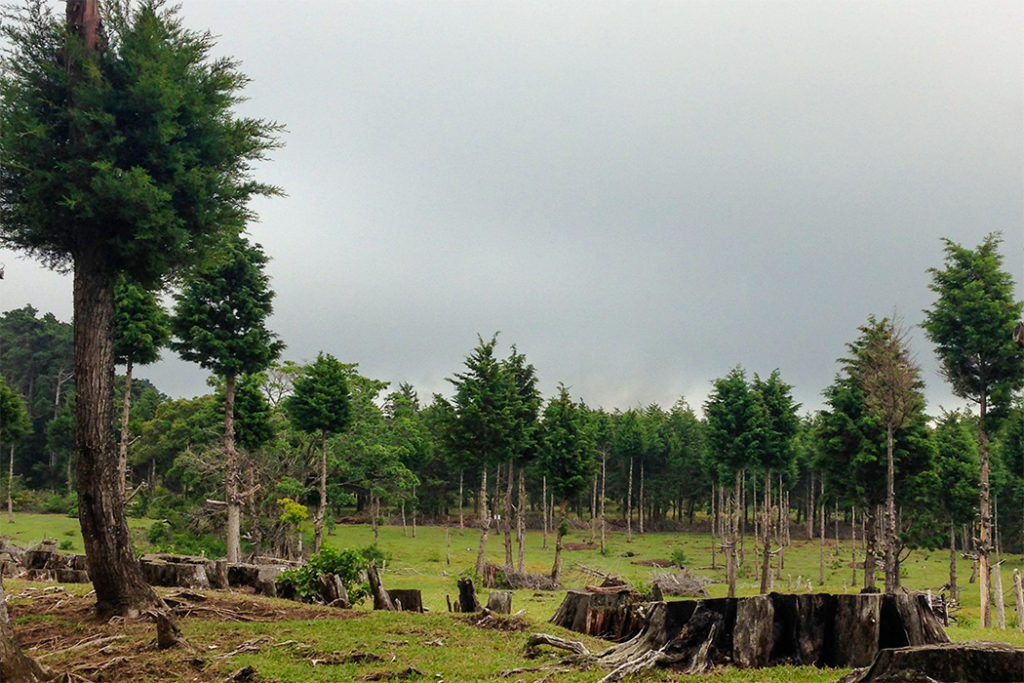
With so many landmarks and amazing places to see in Costa Rica, where do you start? If you find yourself in San Jose for any length of time and want to get away from the city, try heading up to San Jose de la Montaña. Located within the Heredia province, this getaway location is known for its crisp mountain air, windy walking trails, and rich ecosystems that, upon arrival, can make you feel as if you were positioned somewhere in the swiss alps.
With easy access from San Jose, you can arrive here in around 45 minutes. Many people use this route to access the Braulio Carrillo National Park to get to Barva Volcano, which has a peak extending to more than 3,000 meters above sea level. Be sure to carry a packable down jacket as it can get cold after a while, and it is not unusual for it to rain here as the climate is very different from what you experience in the downtown area of San Jose.
All in all, San Jose de la Montaña is a perfect off-the-beaten-track location for anyone who loves the tranquillity of a forest environment and wants to get to learn a different side of Costa Rica’s unique climate and landscape. Recommended by Daniel of Layer Culture
La Paz River & Waterfall (Catarata de la Paz)
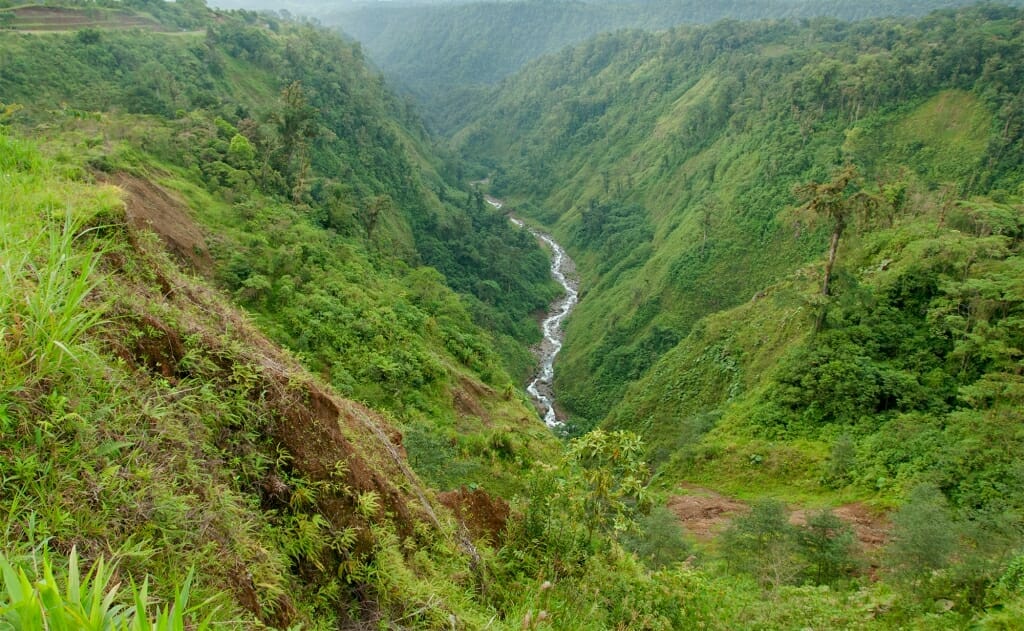
Some of Costa Rica’s landmarks attract a hefty entrance fee, but in a country as beautiful as Costa Rica natural attractions can be found right on the side of the road. La Paz waterfall is one such roadside attraction.
It flows downstream from La Paz Waterfall Gardens Nature Park that costs $48 to visit. The gardens are home to a few waterfalls, a restaurant and a wildlife park. But if you just want to see and walk behind a beautiful waterfall without queueing up and buying a ticket, drive a few hundred meters further on Route 126 and you will come across La Paz Waterfall fed by the same La Paz River that flows through the gardens.
There is a short path that leads behind the waterfall from the road. The water flow is quite strong in La Paz, so standing behind the thundering wall of water is quite an experience.
On the other side of the road, La Paz River forms a dramatic valley as it travels through the forest-covered landscape. Both, the waterfall and the valley are some of the most stunning natural features we’ve come across by the side of the road on our road trip in Costa Rica.
Costa Rica Landmarks in Limón
The province of Limon covers more than 200 kilometres (125 miles) of Costa Rica’s Caribbean coast stretching between Nicaragua and Panama. Home to spectacular national parks is considered to be one of the most pristine regions in the country.
Cahuita National Park (Parque Nacional Cahuita)
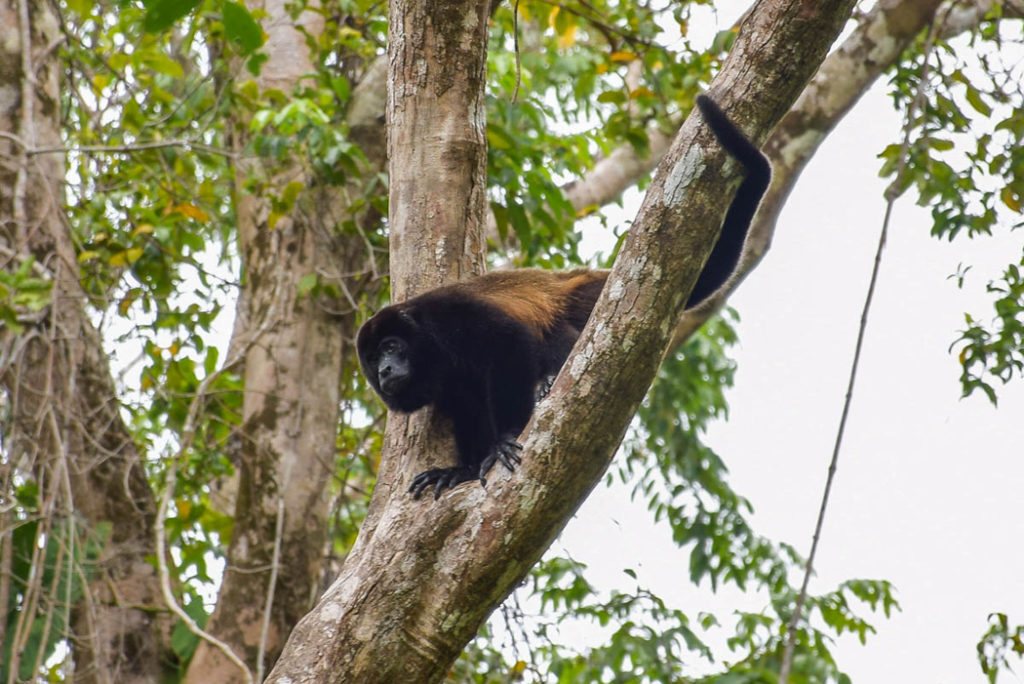
Cahuita National park is one of my favorite places to explore in Costa Rica especially for the wildlife. Located only a short drive from Puerto Viejo, the national park is home to many of Costa Rica’s must-see wildlife including Howler monkeys, sloths, vipers, and much more.
Via a 5 mile walking trail you can explore the park taking in the amazing scenery and keeping a close eye out for wildlife. Of course, animals such as the Howler Monkey aren’t hard to find with their huge howl that can be frightening the first time you hear it.
However, Cahuita National Park isn’t just about Costa Rica’s land animals. In fact, part of the national park is the coral reef just off the beach. Here you can snorkel on a guided tour and enjoy the marine life that calls this region in the Caribean home. This can only be done on a tour to protect the coral reef.
Entrance to the park is by donation only and if you want you can pay a local guide to show you around. Personally, I just explored the park on my own and loved it. This is easily one of the best things to do in Puerto Viejo and a must in Costa Rica! Recommended by Daniel of Destinationless Travel
Tortuguero National Park (Parque Nacional Tortuguero)
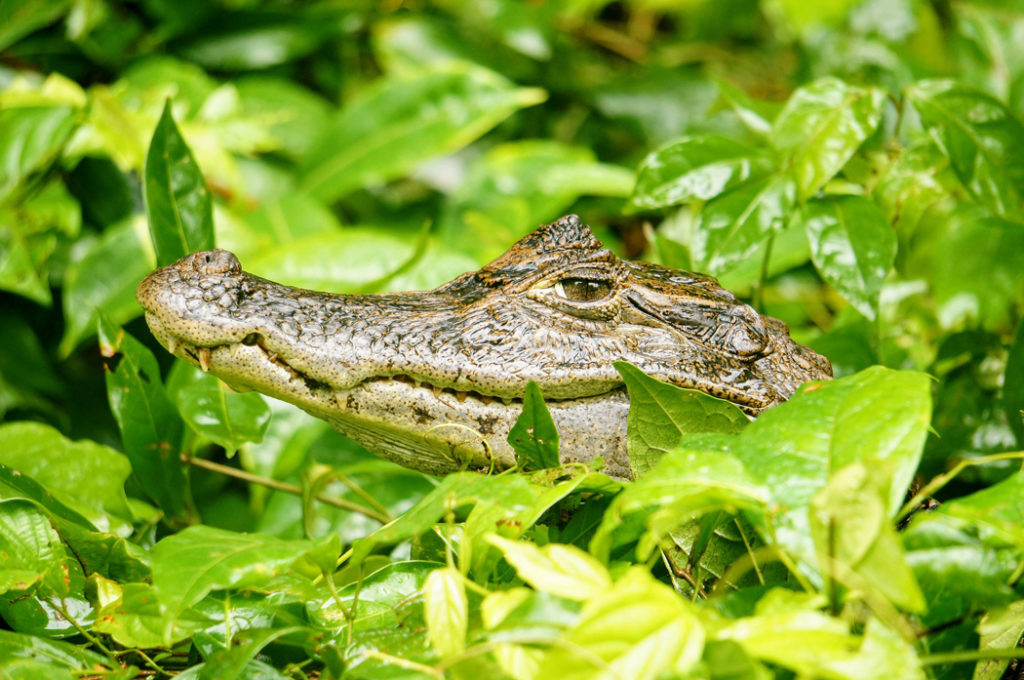
Tortuguero National Park is an Amazon-like network of streams, lagoons and marshy islands. But it is the beaches of Tortuguero that are world-famous as the nesting sites for a number of turtles, including Green sea turtles, leatherbacks, and Hawksbills. To see the turtles emerge on the beach to lay their eggs you need to visit between July and October and book a night tour.
One of the best things to do in Tortuguero during the daylight hours is to take a boat tour through the parks maze of waterways. These wetlands are home to caimans and otters, spider monkeys and white-faced capuchins, not to mention dozens of bird species. There is even a chance, although quite remote, to spot a jaguar. The big cats have been recorded preying on sea turtles in Tortuguero.
And if you are looking for a more independent experience, you can spend a few hours canoeing on Tortuguero’s tranquil waterways.
The picturesque village of Tortuguero lies on a sand bar island between the forest and the see and can only be accessed by boat or by plane. This bustling little settlement has various accommodation and tour options and is a great place to unwind and relax.
Costa Rica Landmarks in San Jose, Limon & Cartago
Chirripó National Park that is home to Cerro Chirripó is shared among the provinces of Limón, San José and Cartago and so represents the two provinces not yet covered on this list of landmarks in Costa Rica.
Chirripo Mountain (Cerro Chirripó)
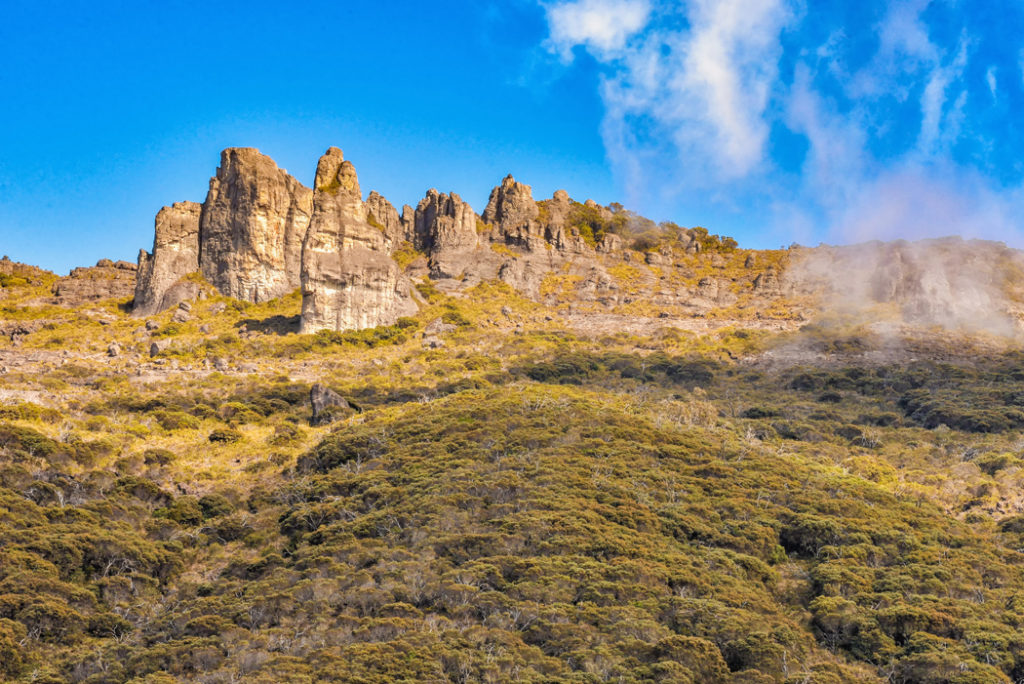
At 3,820 meters (12,533 feet) above sea level, Cerro Chirripó is the tallest mountain in Costa Rica. On a clear day the views from the summit of Cerro Chirripó take in most of the country from Pacific to Caribbean coast. The good news is – you don’t need to be a mountaineer to reach the summit – you can hike to the top of the mountain via the 20-kilometer trail from the small village of San Gerardo de Rivas.
But before you get too excited, be warned, the trail is not a walk in the park. Most people spend at least 2 days ascending 2000 meters to the summit and returning back to San Gerardo. Section names like Faithless Mountain” and “The Slope of Regret” paint a good picture of the hike.
The first day of the hike is the longest and it’s recommended that you start the hike by 6 am at the very latest. You will have 14 kilometres to cover with 2200 meters of elevation until you reach the hut at the Base Crestones. After spending the night at the hut, follow the trail to the summit. The earlier you start the walk the higher is your chance of catching the sunrise on top of Costa Rica’s tallest mountain.
This list of Costa Rica’s landmarks contains some of the most spectacular natural features in the country. How many of these spots have you visited? Which ones are you planning to see next?
More on Costa Rica
- 30 Costa Rica Animals and Where to See Them on Your Travels
- Six Stunning Wild Cats of Costa Rica
- How to Enjoy Osa Peninsula Wildlife without a Tour
- Spotting Wildlife in Monteverde Cloud Forest Reserve, Costa Rica
- Corcovado Tour Review: Spotting Wild pumas in Costa Rica
- 25 Landmarks in Costa Rica to Add to Your Bucket List
- Surprising Wildlife of Riu Guanacaste Resort, Costa Rica
- Road trip: Costa Rica Wildlife & National Parks
- Whale watching in Drake Bay, Costa Rica
- Exploring Palo Verde National Park, Costa Rica

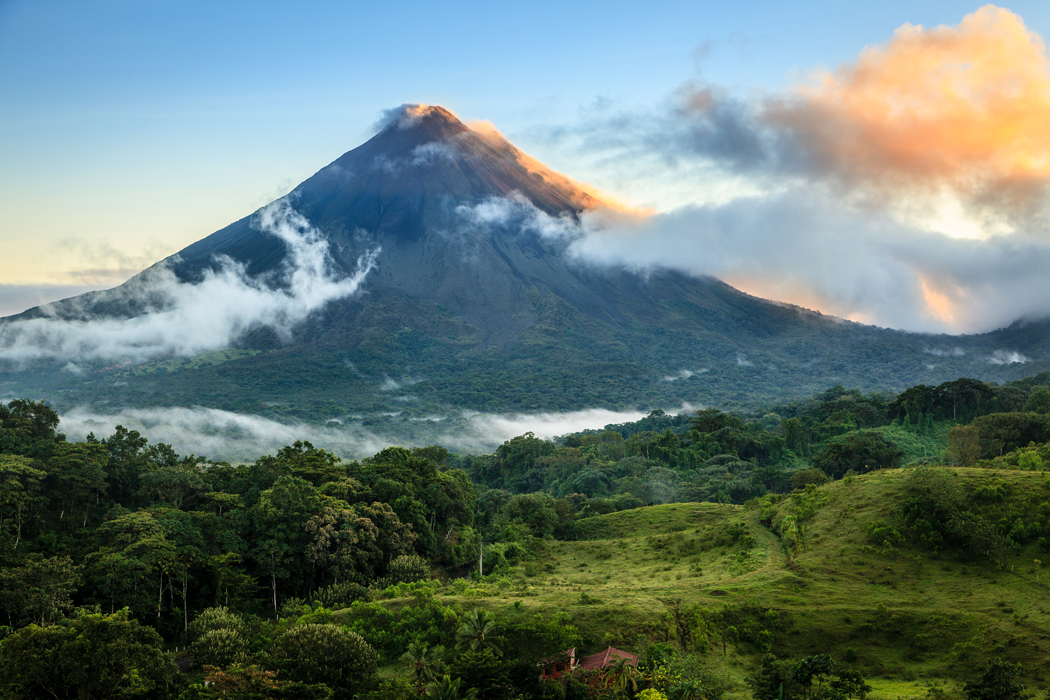
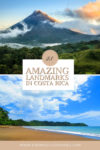
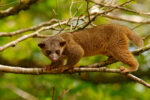
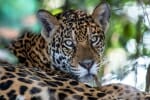
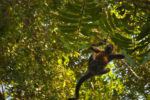
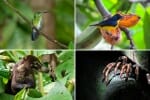
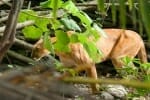
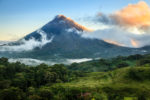
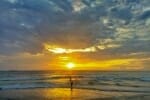
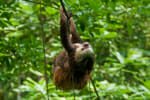
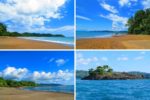
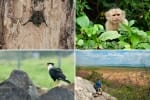
I’ve sent time in the Osa Peninsula area sea kayaking in Golfo Dulce but this shows me many other places in Costa Rica I should visit. Stellar post!
Thank you, Karen!
Costa Rica looks amazing! I love your beautiful pics!
Costa Rica is stunning! I’d love to explore the beaches and waterfalls and also see the Rio Celeste. What an incredible shade of blue!
I haven’t been to Costa Rica yet, and I also have done a lot of research about it so I had no idea about most of these landmarks. I really enjoyed your article!
Thank you, Krista. For such a small country, Costa Rica packs a lot of natural beauty. It is an absolutely stunning part of the world. I have no doubt you will love Costa Rica :)
Wow! 5% of the world’s biodiversity, that’s insane! What a wonderful country.
Love this post – makes me wanna go back to CR. What a stunning country.